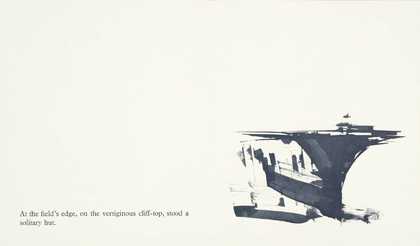Explore the peripheries of landscape in your writing by taking inspiration from contemporary and classical artists, after-hours, in the galleries at Tate Britain.
Over five weeks you will see and discuss works by contemporary artists and writers pushing the boundaries of ‘landscape’ and also discover fresh and alternative ways of looking at and reimagining historical artists and perspectives.
Edgelands and Outliers is for writers, artists and anyone interested in seeking a new ways to analyse and respond to their changing environment. Through readings and optional writing exercises participants will have opportunities to discuss their ideas and work with classmates, or have one-to-one communication with the course leader about their writing.
Course outline
Over the five weeks we will explore the following themes:
Enclosure
Draw inspiration from contemporary artists such as Trevor Paglen, James Bridle and others whose work examines landscape’s complicity in complex questions of enclosure and surveillance in the modern world. And take a new look at household names from the past through this lens, from John Constable and John Clare to Ian Hamilton Finlay.
Empires and Outliers
Who is contained within – or excluded from – the ‘frame’ of the landscape tradition? How does your work as a writer, artist or art lover involve this framework? We’ll look at artists and writers whose work implies or questions these boundaries, from J.M.W. Turner to Sukhdev Sandhu, and discuss landscape as it relates to access to the countryside and cityscape – and how we might expand a vision of such access in our own work.
Edgelands
One dominant aspect of contemporary landscape art and writing is liminality – the spaces in between city and countryside, land and sea, ‘natural’ and ‘human made’. How can we use these edgelands as writers and artists? We’ll look at edgelands in contemporary works by Patrick Keiller and Keith Arnatt, as well as looking back to seek out edgelands in classic landscape paintings.
Environment and Change
How can we reference environmental crisis in works not explicitly related to environmental change? From 18th century British landscape painting to the 21st century work of Alec Finlay, Autumn Richardson and Richard Skelton and others, we’ll look for signs of environmental change in works both old and new. Optional writing exercises will focus on referencing the grand question of ‘environmental change’ in small, subtle ways.
Decay and the Eerie
Decay, ruination, a dark vision of the passing of time – these are themes that extend back to the Romantic landscape tradition and beyond. We’ll look at how the revival of the 'English eerie' connects to themes of cultural and environmental loss, and find inspiration in works from Coleridge to Paul Nash to artists and writers of today such as Tessa Farmer and Adam Scovell. And we’ll try our hand at very brief, and very modern, ghost stories.
Course tutor Justin Hopper is a writer whose work explores the intersection of landscape, memory and myth.

